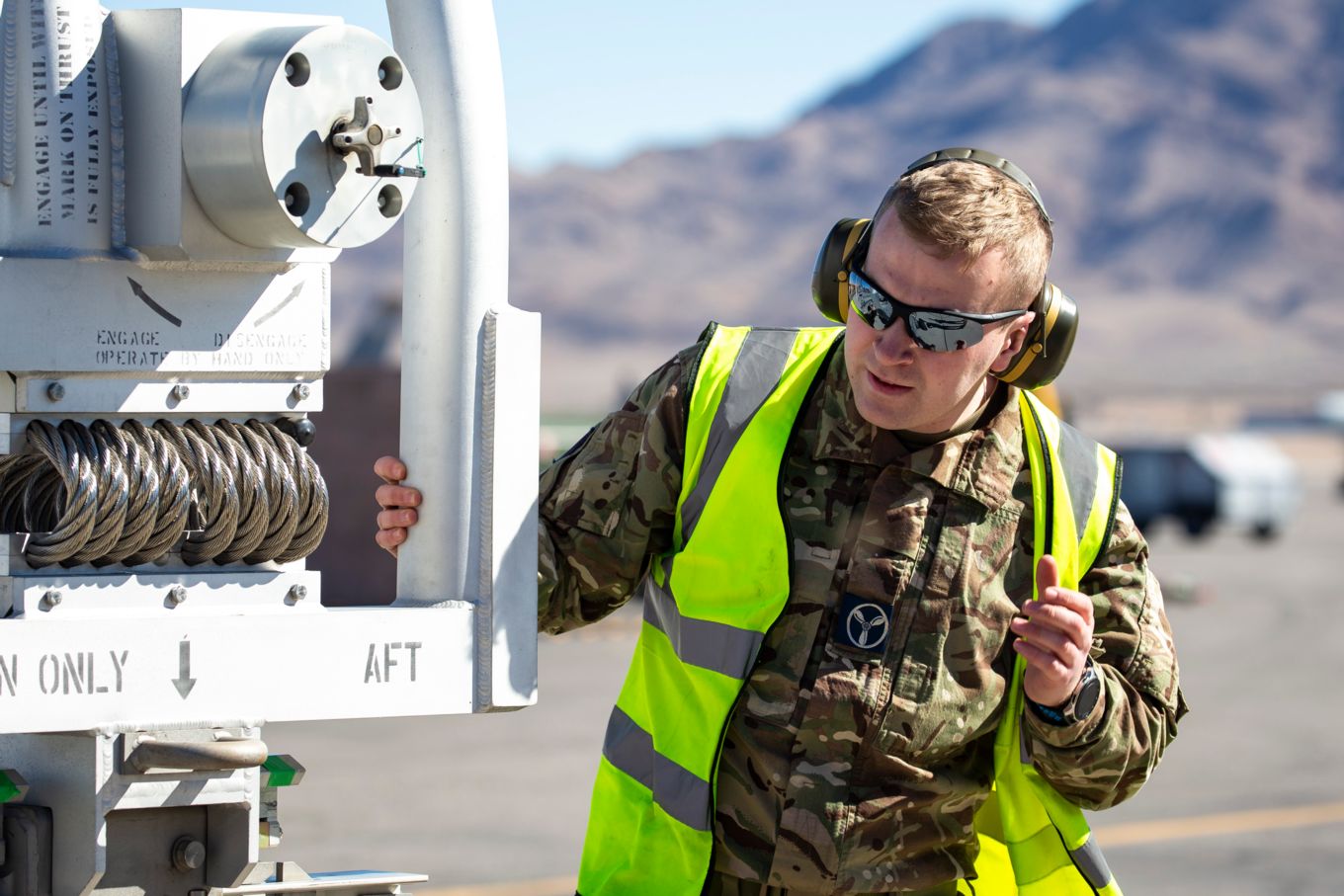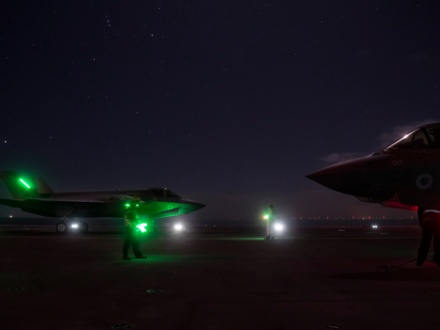Since its inception in 1975 Red Flag, the giant air combat exercise held annually in the United States, has tested participants to the limits. This year has been no exception; Typhoon, Voyager, Air Operations staff and, for the first time, Lightning have spent three weeks in Nevada honing their skills with American and Australian counterparts.
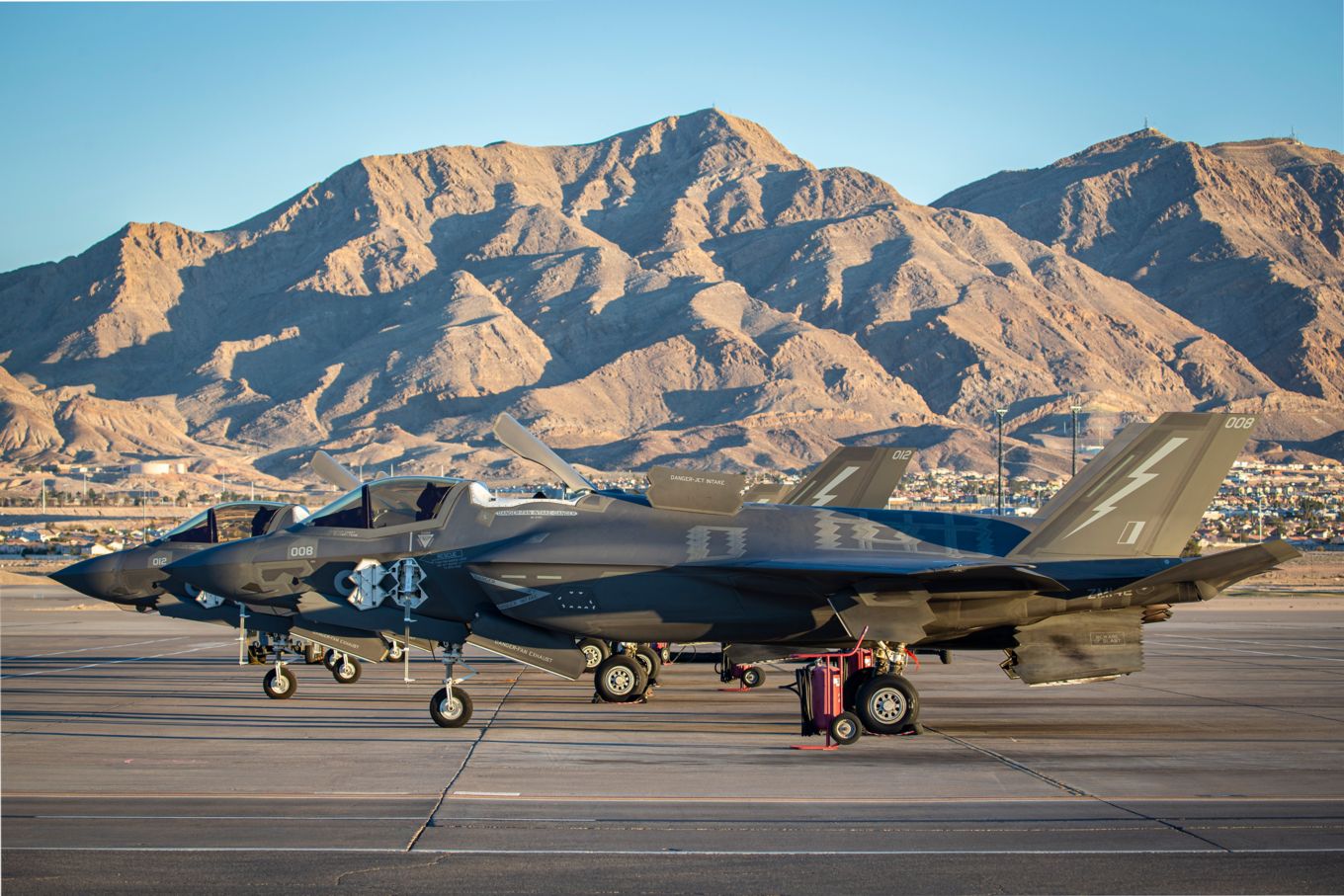
The training exercise was born from US Air Force (USAF) experiences in the Vietnam War where statistics showed the survival rate for fast jet aircrew improved significantly once they had flown 10 operational missions. Through Red Flag the USAF sought to replicate real combat conditions as closely as possible in order to improve survivability.
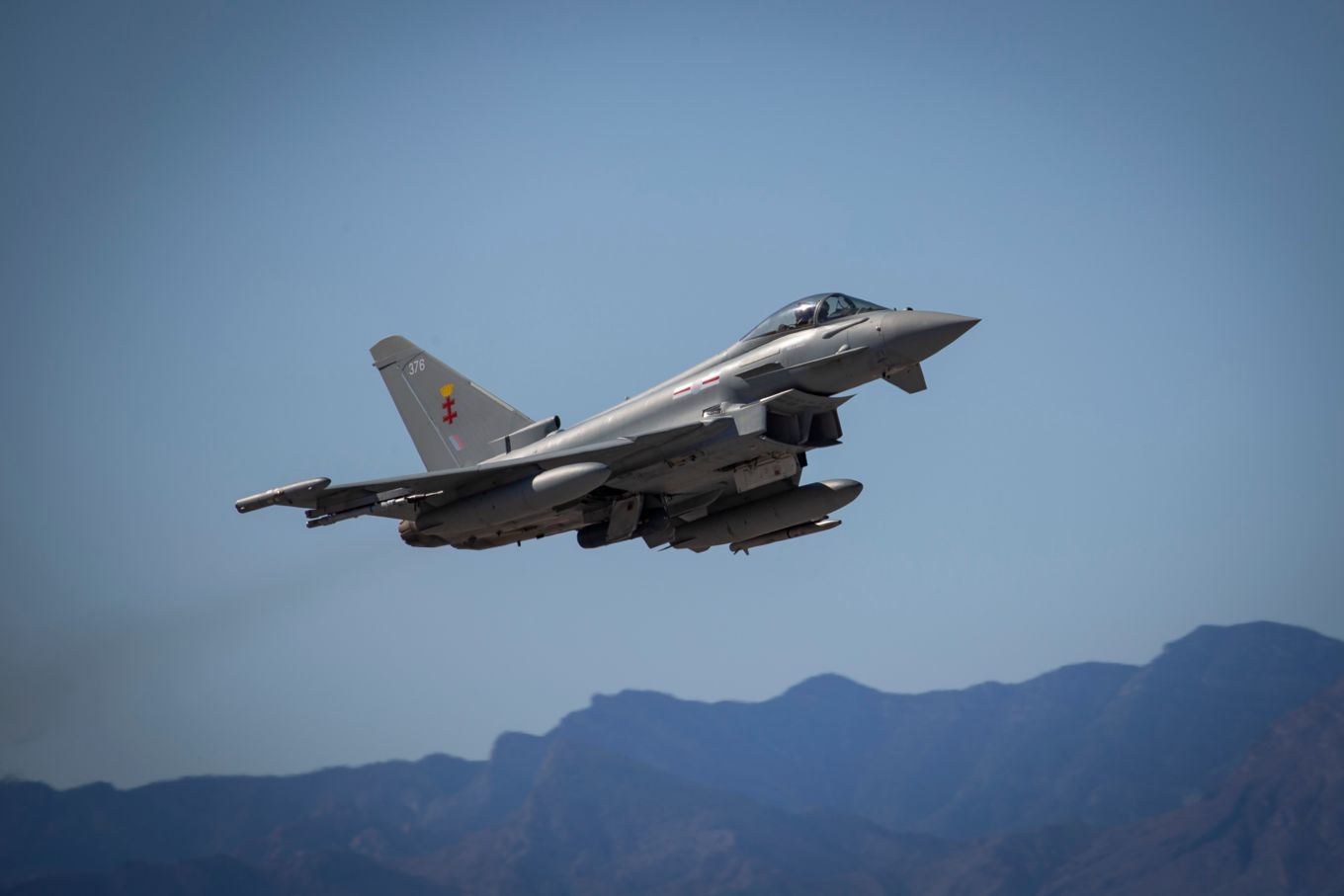
The breadth and scale of the exercise is breath-taking, it takes more than an hour simply to launch the aircraft taking part in each of the two daily training missions. But whilst this is no different to the original exercises, the pace of progress is such that once airborne the realism and complexity is unrecognisable even to those who participated five years ago.
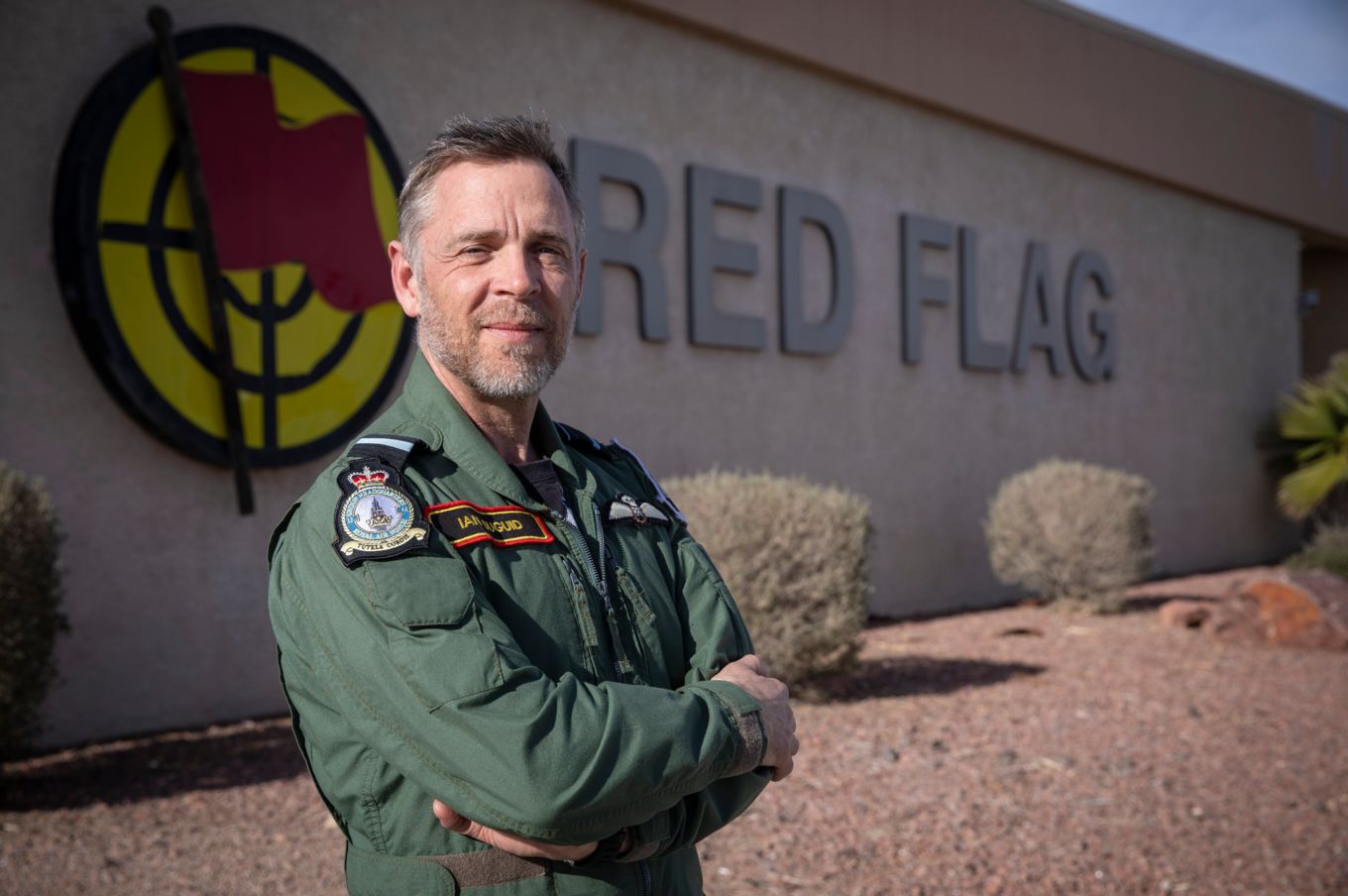
“Red Flag is one of the pinnacle exercises of the Royal Air Force calendar. Fundamentally it helps that we integrate with our American partners, the Royal Australian Air Force and our other coalition partners, so when we actually deploy on operations it’s not the first time that we’ll have worked with our partners in close proximity.”
Air Vice-Marshal Ian Duguid
Air Officer Commanding 11 Group
For the exercise the RAF deployed Lightnings from 617 Squadron, Typhoon FGR4s from 41 Test & Evaluation Squadron (TES), a Voyager jointly operated by 10 and 101 Squadrons, and an Air Operations Centre together with all the support required to operate 5,000 miles from home.
“The Exercise builds incrementally” explained AVM Duguid. “The first week is a little bit of crawl, then the second week a walk and then finally into the last week which is very a much high threat scenario. This has lots of complex operating environments, with electronic warfare and electronic jamming which plays havoc with our GPS.”
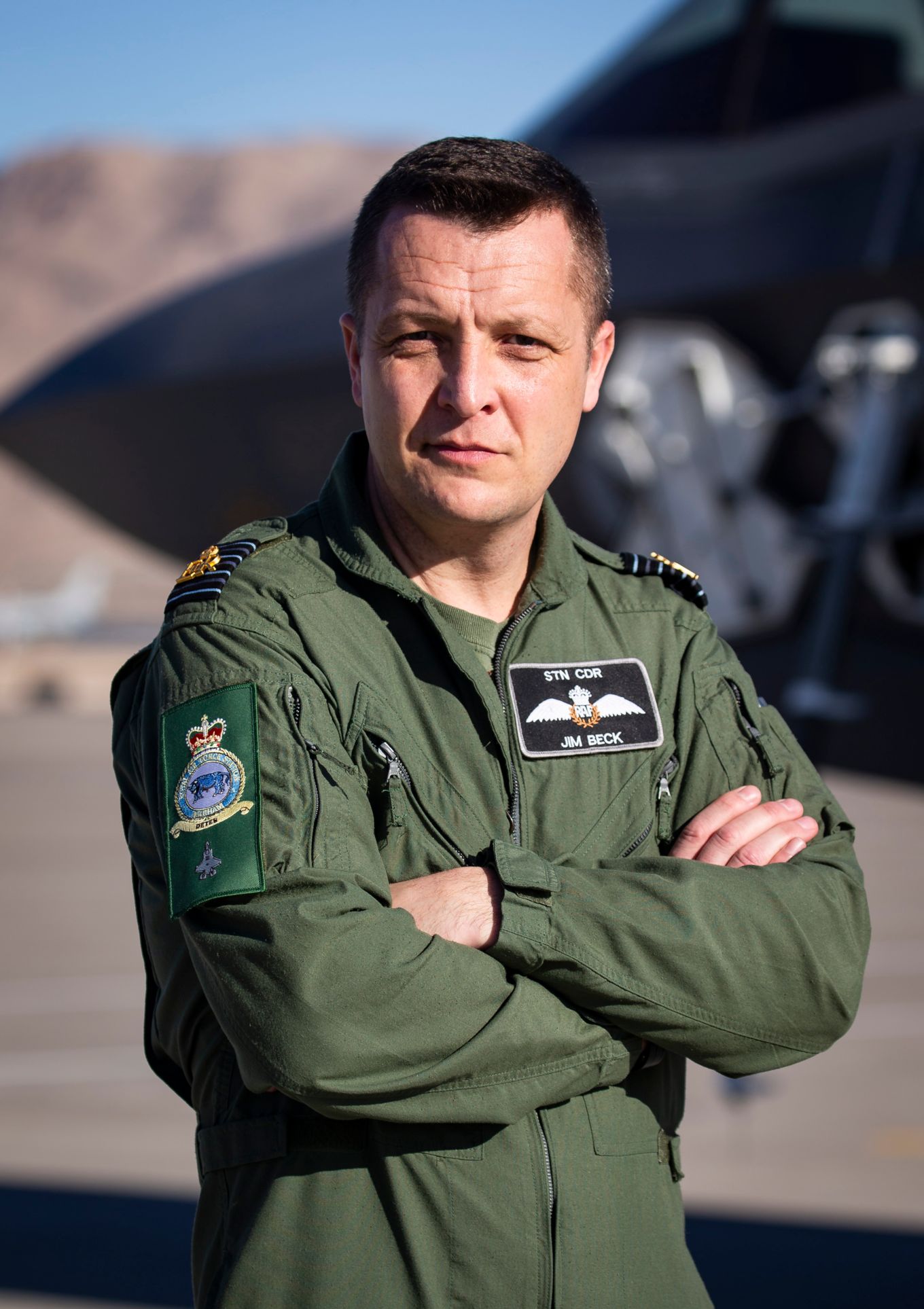
“This is my sixth Red Flag Red Flag and the bar has not only been raised a matter of inches, it’s feet higher now. This is now multi-domain which means we can really put the jets and our people through their paces.
“This is invaluable, there is nowhere else we can get this level of training, assessment and qualification of our tactics.”
Group Captain Jim Beck
UK Detachment Commander
RAF Marham Station Commander
RAF Coningsby based 41 TES are no strangers to the US, arriving at Nellis from California where they conduct trials and development work on Typhoon. Squadron Leader Andy Milikin said: “The training you get here is really peerless. To be able to operate with the Voyager, with F35 and the deployed support unit brings us together in a way that you cannot do when you’re at your own base in the UK. Coming to Nellis to take part in Red Flag gives you the best real-world training without actually going to war.”
He added, “We’ve got a huge expanse of airspace in which we can fly. The threats which the Americans provide are highly realistic and you really can’t go anywhere else in the world other than to come out to Las Vegas to get this sort of training.”
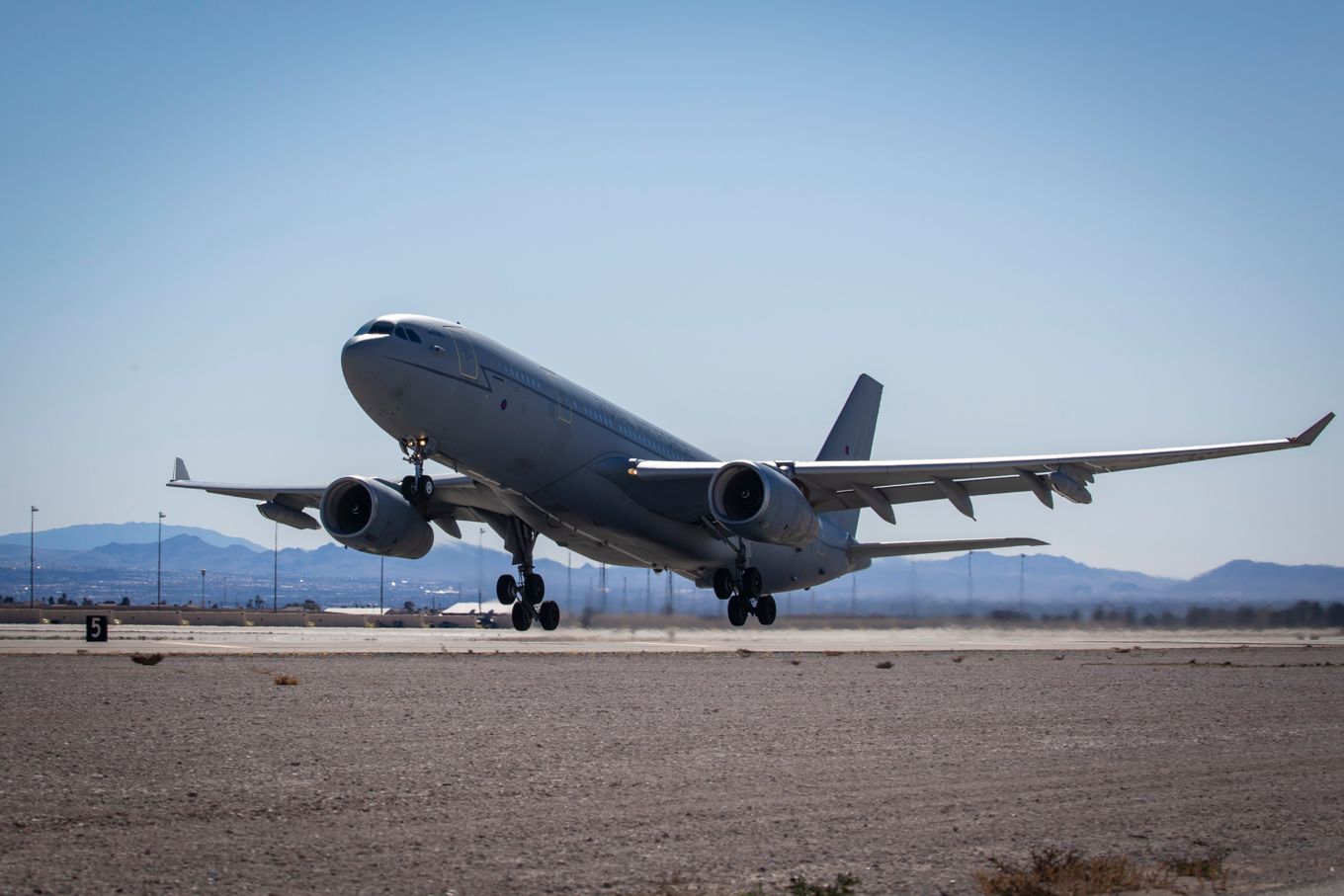
The sole air-to-air refuelling aircraft on the exercise was a Voyager KC3 operated by a crew drawn from both 10 and 101 Squadrons at RAF Brize Norton. With a dozen Royal Australian Air Force Super Hornets and Growlers in addition to the RAF Typhoons and Lightnings the RAF tanker was a popular port of call throughout the exercise. The RAF also contributed personnel to the Air operations Centre who provided mission planning in support of the live fly exercise.

The conclusion of flying activity at Nellis heralds the next crucial phase of the exercise as AVM Duguid explained: “The first thing we do when we return from an exercise or a deployment on operations is to write a report. That covers everything from how we learn lessons on how we looked after ourselves in terms of food and accommodation and whether we had deployed at the right times to the tactical and operational lessons we learned from the exercise.”
“The key lessons in particular are the ones that we really need to close out and address before we then do subsequent deployments with the same capabilities. Before Lightning deploys on HMS Queen Elizabeth all of the hard and really important lessons that we learn from this exercise will have been taken forward.”
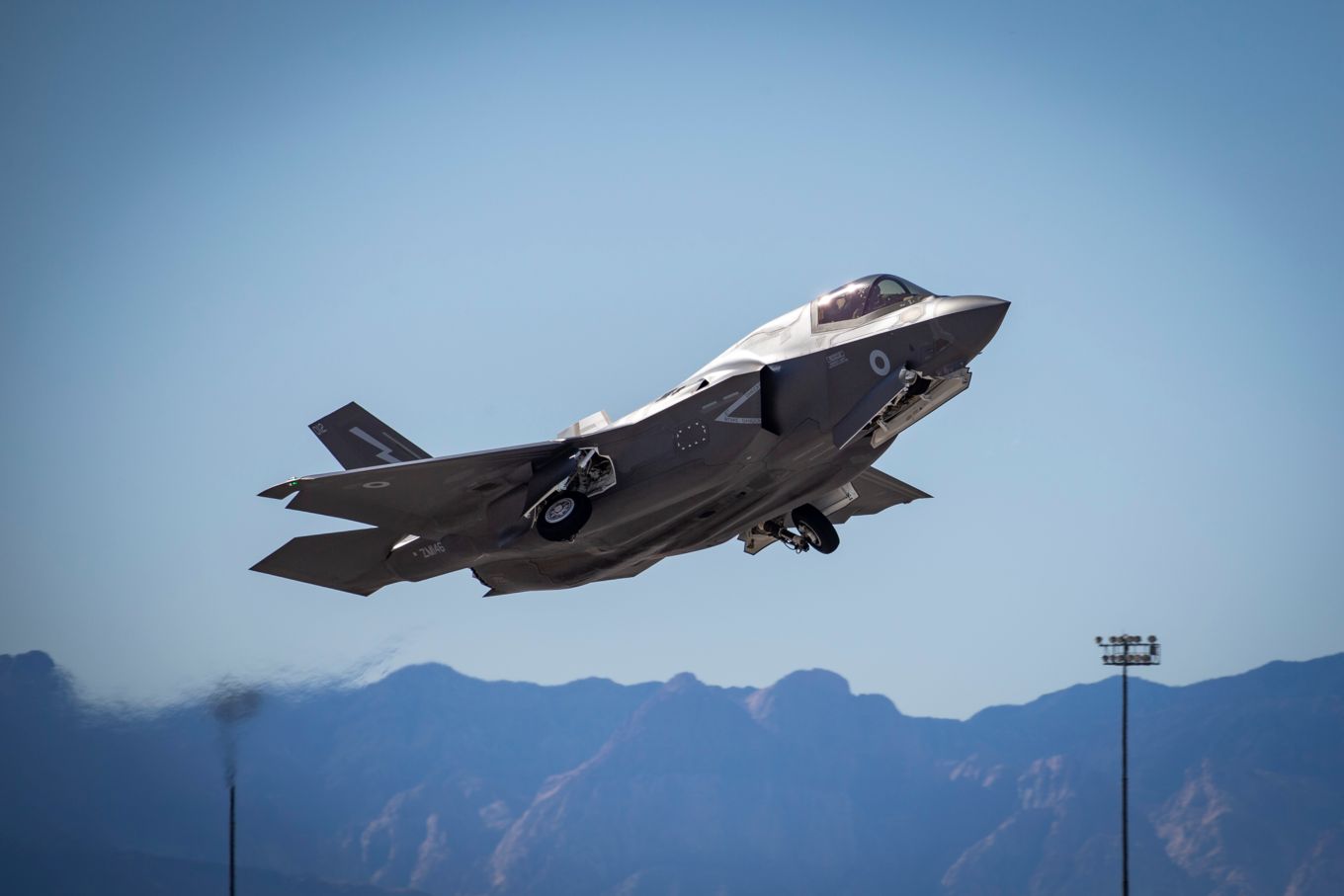
In the weeks leading up to the three-week exercise over 250 tons of equipment required to sustain and support the exercise arrived at Nellis Air Force Base in Nevada via land, sea and air in a complex logistical move.
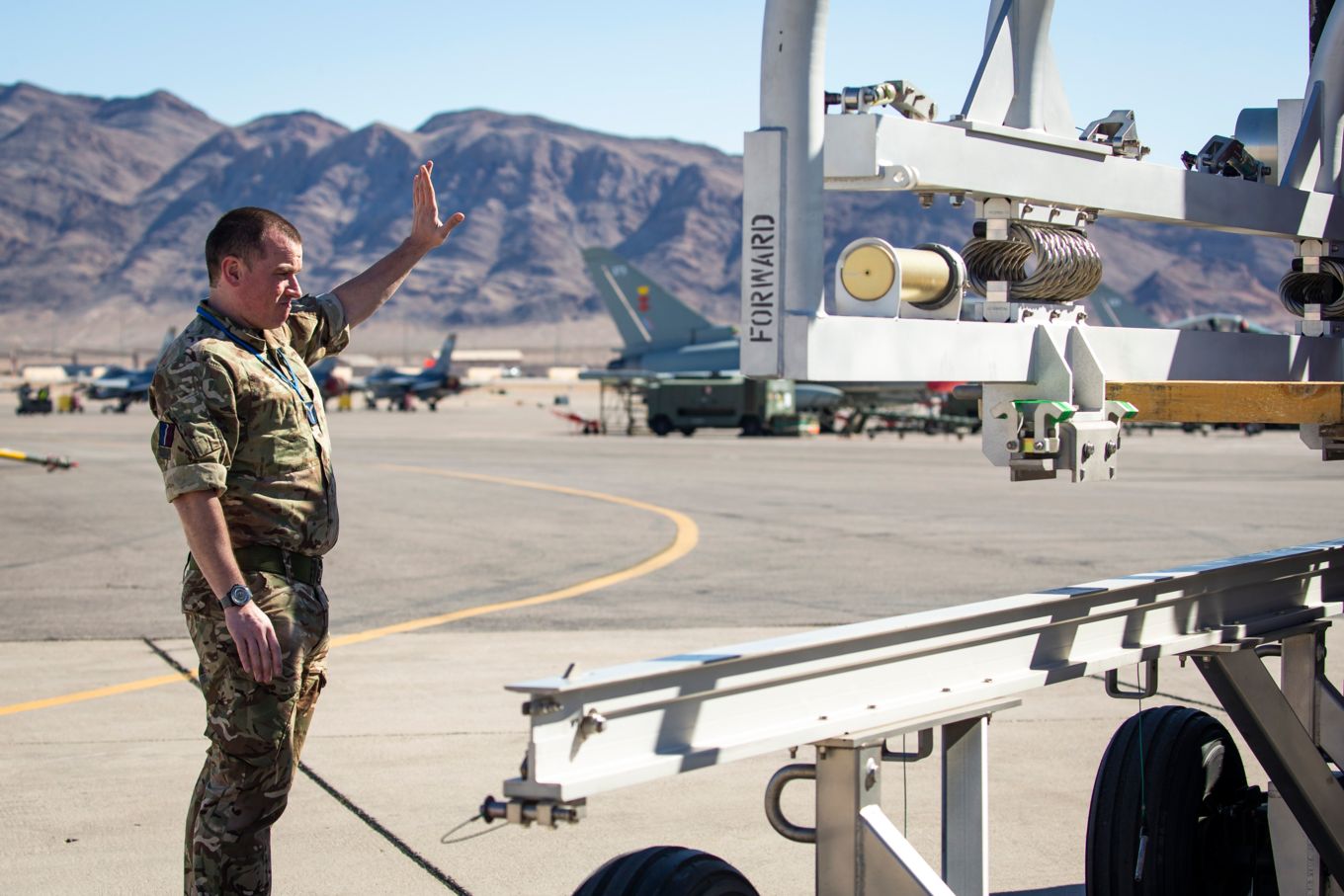
Flight Lieutenant Tom Williams is the Detachment Logistics Officer. He said: “We had a surge of Movements personnel at the beginning to set up the exercise, taking delivery of over 50 ISO containers containing equipment for the three aircraft types deployed and for 90 Signals Unit.
“Lightning and Voyager equipment had been shipped by sea from the UK and then taken overland to Nellis, and the Typhoon equipment was transported from China Lake in California. In addition, kit was transported by air including an aircraft tow tractor and a 90 Signals Unit Man SV Support Truck. There will be a further surge for the pack up and recovery when the equipment and personnel return to the UK.”
